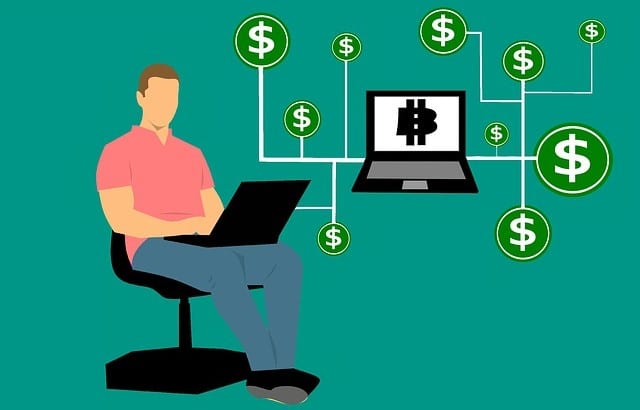Blockchain a technology for storing and transmitting information. It is often defined as a decentralized, distributed ledger that stores ownership of digital assets. Indeed, any data stored on the Blockchain is impossible to modify, making this technology a real revolution in sectors such as cybersecurity or healthcare. This technology is mainly used as a protocol for the secure transfer of money, goods, contracts.... Thanks to the Internet, all this is done directly, without the need for a third-party intermediary such as a bank or government.
Blockchain is a particularly promising and revolutionary technology, as it reduces security risks, eradicates fraud and brings enormous transparency to all transactions.
Popularized by its association with crypto-currencies and NFTs, blockchain technology has since evolved into a business solution for all types of global industries. Today, blockchain enables transparency in many sectors such as the food supply chain, secure healthcare data, innovation in video games.
What makes this technology unique?
One of the most important concepts of blockchain technology is decentralization. No single computer or organization can own the technology. Instead, it is a large distributed notebook via nodes connected to the blockchain. Blockchain nodes can be of many types, but they are necessarily electronic devices that maintain copies of the chain and keep the network running.

Each node has its own copy of the blockchain. For each new block mined, the network approves it with the help of an algorithm to keep the system up to date. Thanks to this and the transparency of blockchains, these systems are considered highly secure.
Each participant receives a unique alphanumeric identification number, which indicates his or her transactions.
It’s important to know that blockchains can be “permissionless”, i.e. accessible to all, like bitcoin, or “permissioned”, when they are built by a company or group that allows access only to certain people.
Blockchain and Bitcoin
Bitcoin is a crypto-currency, i.e. a virtual currency designed to act as a form of money and means of payment beyond the control of any individual, group or entity, thus eliminating the need to involve a third party in financial transactions. Bitcoin was first introduced to the public in 2009 by one or more developers using the name Satoshi Nakamoto.
The Bitcoin blockchain is a type of distributed database that stores Bitcoin transactions. Instead of a conventional database where information is stored in arbitrary folders, Bitcoin transactions are stored in “blocks”. When new transactions occur, they are grouped into these “blocks”.
Any movement of an asset within the blockchain is recorded in a block. The addition of each block and each transaction is irreversible, enabling the chain to remain perfectly accurate.
Bitcoin miners contribute to the construction of this blockchain by extracting new blocks. A miner adds data to a new block and creates a new division within the base block, adding it to the chain.
A miner must fill in a mathematical equation to verify the blocks and guarantee their accuracy.

Transparency is one of the key factors of this blockchain. Indeed, all transactions on the Bitcoin blockchain are recorded on the network’s computers. Transactions are totally transparent because the addresses and transaction histories of crypto-currency wallets are publicly visible, but the owners of each wallet connected to these public addresses are anonymous and unrecorded.
Bitcoin and other popular crypto-currencies rely on public blockchain networks, meaning that anyone can join. This is what has really made this virtual currency so important in such a short space of time, today it is considered that over 40 million people worldwide own Bitcoin.
All transactions on the Bitcoin blockchain are recorded on the network’s computers. Transactions are totally transparent, as the addresses and transaction histories of the crypto-currency wallets are publicly visible, but the owners of each wallet connected to these public addresses are anonymous and unrecorded.
What are the advantages of blockchain?
Enhanced safety
Your data is sensitive and crucial, and blockchain can dramatically change the way your critical information is perceived. By creating a record that cannot be altered and is encrypted from end to end, blockchain helps prevent fraud and unauthorized activity.
Information is stored on a network of computers rather than on a single server, making it difficult for hackers to access the data.
Instant traceability
Blockchain creates a path that documents the provenance of an asset at every stage of its journey. In sectors where consumers are concerned about environmental or human rights issues linked to a product’s provenance, this acts as a real revolution. Traceability data can also highlight weaknesses in any supply chain.

Quick and efficient
Cumbersome traditional processes are time-consuming, prone to human error and often require the intervention of an intermediary. Documentation can be stored on the blockchain along with transaction details, eliminating the administrative burden.
Automation
Transactions can even be automated using “smart contracts”, which increase efficiency and speed up the process even further. Smart contracts reduce human intervention, for example.
In conclusion, we have seen that today, Blockchain appears to be a real revolution, and that many projects are seeing the light of day thanks to this new system. Even if it’s sometimes overlooked, Blockchain is truly linked to Data Science.
To use it, you need to understand how data works. This requires a solid theoretical foundation to make the link between the two. We offer training courses that will enable you to master this knowledge, such as our Data Scientist course.










